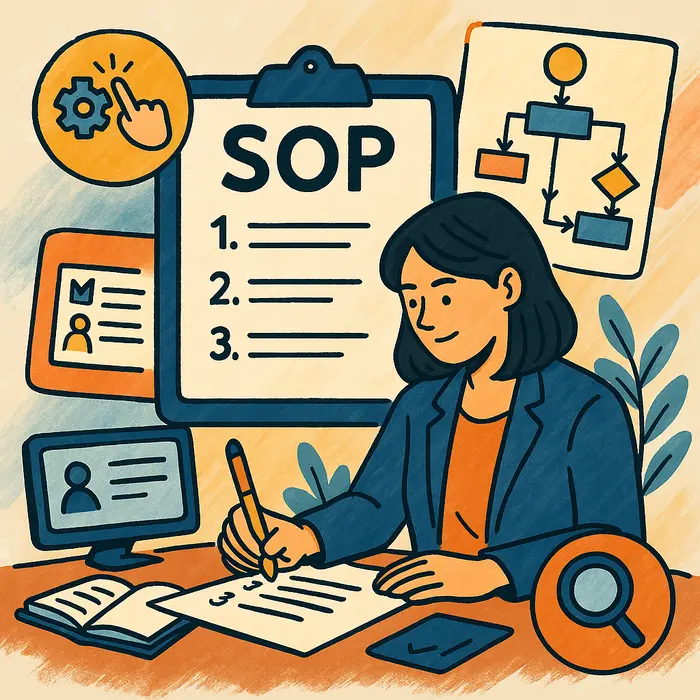Writing SOPs That People Will Actually Use
Standard Operating Procedures (SOPs) are supposed to create clarity. But too often, they gather dust.
Why? Because many SOPs are too long, too vague, or too disconnected from daily work.
Here’s how to write SOPs that are actually used—and that truly help your team work better.
1. Write for Use, Not for Perfection
You’re not writing a novel. You’re writing a tool.
- Keep it short and specific
- Use simple language and clear steps
- Focus on what someone actually needs to do the work
Done and useful beats perfect and unread.
2. Start with a Trigger and an Outcome
Every SOP should answer:
- When should I use this? (trigger)
- What should be the result? (outcome)
Example:
- Trigger: New client signs contract
- Outcome: Client is fully onboarded in 5 days
This frames the SOP with purpose.
3. Break It Into Clear Steps With Visuals
Use numbered steps, bullets, or checklists:
- Open the client folder
- Copy the onboarding checklist template
- Schedule the kickoff call
Where possible, include:
- Screenshots
- Links to templates
- Video walkthroughs
Visuals make SOPs easier to follow.
4. Name Roles, Not Just Tasks
Clarify who does what:
- Ops Manager: Sends welcome email
- Account Lead: Schedules intro call
- Admin: Updates CRM record
This reduces dropped balls.
5. Make It Easy to Find and Use
Store SOPs where people already work:
- In your project management tool (Asana, ClickUp)
- Linked inside daily task templates
- Organized in a shared SOP library by function
If people can’t find it, they won’t use it.
6. Review and Refresh Regularly
Outdated SOPs create more confusion than help.
- Review key SOPs quarterly
- Ask: Is this still accurate? Still needed?
- Let users suggest edits and improvements
Good SOPs evolve with your processes.
Habits for SOP Adoption and Impact
- Highlight a useful SOP in weekly meetings
- Ask new team members: Was this SOP helpful?
- Include SOP links in task assignments
- Create a “Top 10 SOPs” quick-access list
Summary: Usable SOPs Are Simple, Clear, and Alive
The best SOPs aren’t long documents. They’re quick tools that help people do better work, faster.
Write for clarity. Keep it visible. Improve it often. That’s how SOPs become assets, not artifacts.
